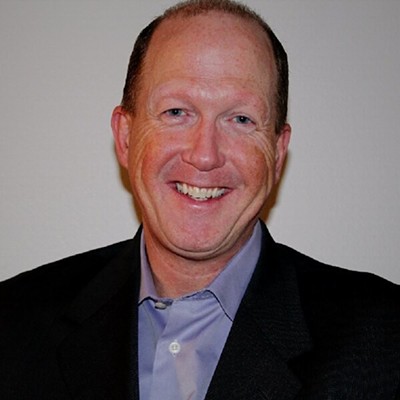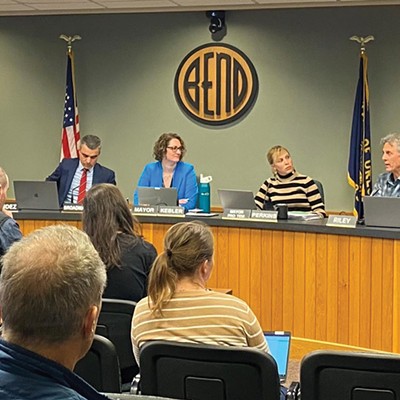ast week at the Bend City Council meeting, Councilor Bill Moseley floated the idea of an additional targeted system development charge, aimed at developers building in the areas inside the new Urban Growth Boundary expansion that will need new infrastructure, including roads. The city is in need of funds to develop many of the recently incorporated areas for development.
But there's another approach that could also bring in money without raising SDCs— and relatively quickly. As highlighted during the Bend Chamber's Economic Forecast breakfast this month, dense, mixed-use developments bring a far higher rate of return per acre than single-use developments, whether those are large shopping centers or single-family homes. Assuming that the homes built in the nether regions of Bend's UGB are more of the single-family variety, they're simply not going to bring in the level of revenue that a mixed-use neighborhood, built for density, can garner.
According to an article by architect Joseph Minizozzi, AICP, the city of Asheville, N.C. realizes an 800 percent greater return on downtown mixed-use development projects compared to single-use development—to the tune of $360,000 more in tax revenue per acre going toward city government. This is not an anomaly.
Another way to bring in revenue is a bond measure to pay for roads; however, property owners are already additionally burdened within the city by the recent school bond. Without a sales tax (or an additional city gas tax, which we supported for roads last year), property taxes are a big piece of the budgetary pie.
One of the other advantages of the Central District is that is doesn't need nearly the amount of infrastructure development as do that the newly added areas of the UGB do. The roads are already there. So is the water and sewer. The area is ripe for smart developers to seize this opportunity to build up, and build densely, and give the many future denizens of Bend, who will desire walkability and access to downtown, the type of neighborhood they'll be craving.
The City of Bend could aid in this effort by considering not another road bond that burdens existing homeowners, but by offering incentives to builders, such as Tax Increment Financing to developers who come to the table with qualifying mixed-use projects. The City and developers could also look toward New Market Tax Credits, if they could prove that the area is currently economically disadvantaged and that they would be creating significant jobs by revitalizing them. And of course, developers could also consider including affordable housing projects in the district, which would allow them to have System Development Charges waived, and to address a great need in our region at the same time.
Asking voters, who so recently approved a bond to improve and build much-needed schools in our area, is too much right now, and would likely go the way of the gas tax. Still, building new roads is going to be a necessity in the wider UGB, and that's going to require more money in the city's general fund. Developing the Central District will start bringing in those funds—and ideally, an attractive region that alleviates some of the city's housing crisis to boot.
Bend has an enormous opportunity for mixed-use development in the Central District. If the City and local developers place their focus on improving that area, already zoned for mixed-use, the region could very well start reaping the benefits of hundreds of thousands of extra dollars—or much more—in tax revenue to pay for those yet-undeveloped areas of the UGB.

























